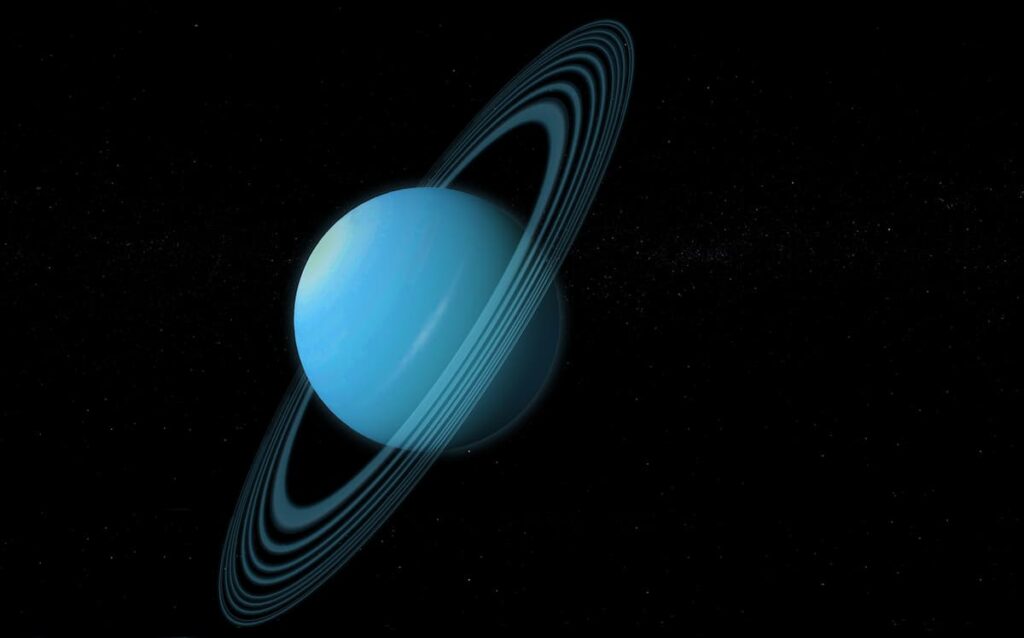A rare cosmic event has offered NASA scientists a unique opportunity to study Uranus—one of the solar system’s most mysterious and least-explored planets. Using a distant star as a natural backlight, researchers were able to observe the ice giant’s atmosphere, rings, and puzzling thermal behavior without needing to send a spacecraft.
A Cosmic Trick to See the Invisible
Uranus recently passed in front of a distant star located around 400 light years from Earth, creating what scientists call a “stellar occultation.” This rare alignment allowed researchers to observe how the planet’s atmosphere bent and filtered the star’s light. As the star was gradually obscured and then reappeared, it produced a “light curve”—a pattern that reveals vital information about the planet’s atmospheric layers.
Instead of relying on satellites or probes to collect data from billions of miles away, scientists used this light curve as a non-invasive tool to determine the temperature, pressure, and chemical composition of Uranus’s atmosphere. Multiple telescopes across parts of western North America tracked the event, which only lasted about an hour. Despite the short window, the results were significant, marking one of the most comprehensive observational collaborations focused on Uranus to date.
Unlocking the Secrets of an Ice Giant
Uranus is often referred to as an “ice giant” because of its cold, methane-rich atmosphere. Temperatures can drop as low as –224°C, making it one of the coldest planets in the solar system. However, despite its frigid surface, scientists have long been puzzled by the surprisingly high temperatures in its upper atmosphere.
The recent occultation data may finally shed light on this contradiction. By analyzing how starlight passed through various layers of Uranus’s atmosphere, researchers are starting to piece together new theories that could explain the unexplained heat.
This method also provided updated measurements of atmospheric turbulence, offering insights into wind patterns and storm activity on the planet. Such data are critical for understanding the complex climate systems of Uranus, especially given how little direct exploration it has received in the past.
A Team Effort to Explore the Unknown
The event was visible only from select locations in western North America, prompting NASA to organize a collaborative effort involving 30 astronomers and 18 professional observatories. It marked a new level of teamwork in observing planetary occultations. Thanks to their efforts, scientists were able to gather high-resolution data across different altitudes of Uranus’s atmosphere, something that would be extremely difficult to do through traditional space missions.
In addition to atmospheric insights, the stellar occultation also provided information about Uranus’s faint ring system. These rings are far less prominent than those of Saturn but are still of great scientific interest. Tracking how the starlight interacted with these rings helped refine their structure and composition, and could improve predictions of their behavior over time.
Researchers are also using the data to refine the calculations of Uranus’s orbital path around the Sun. While this may seem like a minor detail, having more accurate orbital data is essential for planning any future missions to the distant planet.
A Glimpse Into the Distant and Mysterious
This rare observational opportunity has opened a new window into a planet that remains largely unexplored. The last and only spacecraft to visit Uranus was Voyager 2, which provided limited data during its brief flyby. Since then, direct observations of the planet have been scarce, making this recent event an invaluable moment for space science.
With the new information collected through this stellar occultation, scientists are better equipped than ever to understand the dynamics of Uranus. From its complex atmosphere and hidden rings to its oddly warm upper layers, every piece of data brings us closer to unlocking the secrets of this distant world.
And while the event lasted only an hour, the discoveries it enabled will help guide future research—and perhaps even pave the way for the next generation of missions to the outer reaches of our solar system.


